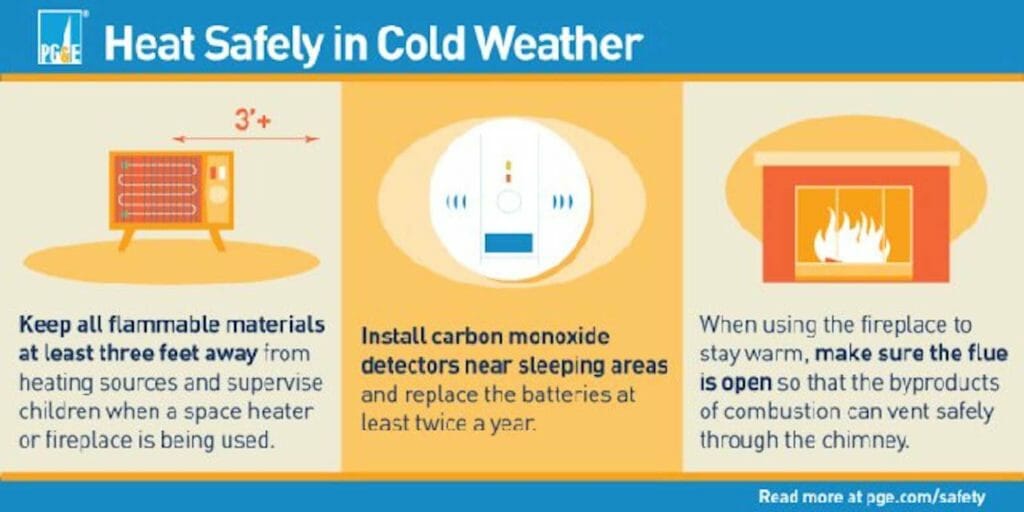PG&E’s safety tips on home heating and carbon monoxide
SAN FRANCISCO — Cold winter weather has arrived in California and Pacific Gas and Electric Company (PG&E) urges customers to be aware of the dangers of carbon monoxide.
Every year, approximately 430 people die in the U.S. from accidental carbon monoxide poisoning and approximately 50,000 people visit the emergency room.
Carbon monoxide is a colorless, tasteless and odorless gas produced by the burning of fossil fuels and wood. In general, properly installed and maintained natural gas appliances produce very little to no carbon monoxide. However, if unsafe concentrations of carbon monoxide are not detected, the result can be fatal.

If customers suspect a problem with a natural gas appliance in their home, they should call PG&E immediately at 1-800-743-5000. A gas service representative will be dispatched to do a thorough inspection.
To help prevent carbon monoxide poisoning, PG&E offers the following safety tips:
- Install a carbon monoxide detector, which will warn you when concentrations become dangerously high. California law requires owners of all single-family homes with an attached garage or a fossil fuel source to install carbon monoxide detectors within the home. Owners of multi-family dwellings must comply by Jan. 1, 2013.
- Place detectors near sleeping areas, where they can wake you if you are asleep.
- Never use products inside the home that generate dangerous levels of carbon monoxide, such as generators, barbecues, propane heaters and charcoal.
- When using the fireplace to stay warm, make sure the flue is open so that the byproducts of combustion can vent safely through the chimney.
- Ensure that generators are properly installed and operated outdoors. For more generator safety tips, visitpge.com/generator.
- Do not idle cars inside the garage, and do not allow snow to block tailpipe emissions when operating a vehicle outdoors.
- Make sure water heaters and other natural gas appliances have proper ventilation. Older appliances and room heaters that are not vented externally should be inspected annually.
- As part of customers’ gas service, PG&E representatives are available to inspect gas appliances and make sure they are working safely. To schedule an inspection, customers can visit the “My Energy” feature atpge.comor call 1-800-743-5000.
Symptoms of carbon monoxide poisoning include headaches, drowsiness, dizziness, nausea and convulsions. Because carbon monoxide is hard to detect, someone with mild poisoning can go to sleep and continue to breathe the carbon monoxide until severe illness or death occurs. People may also mistake their symptoms for a viral infection like the flu.
For more ways to stay safe this holiday season, visit www.pge.com/safety.
Want stories like this delivered straight to your inbox? Stay informed. Stay ahead. Subscribe to InqMORNING

